|
| Established in 1912 by Struthers Burt and
Horace Carncross, the Bar BC Dude Ranch is the oldest extant
dude ranchs in Wyoming and possibly in the United States. It is nestled
on the flood plain
between the Snake River and Teton Park Road to take full advantage of
the vistas of the Teton Range. Created by its owners to include cabins,
recreational buildings, a pool, corral,
and fencing, the site was intentionally set up to offer paying
customers the opportunity to socialize as well as enjoy the great outdoors. | | 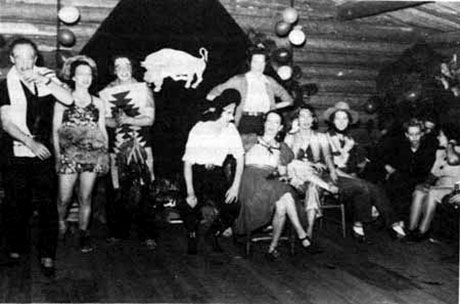 | | A party in the recreation hall often included costumes. |
|
At
its peak, the site had thirty-six major
structures, plus additional out-buildings. These structures were made
from local materials in a rustic style and simple floor plan often
referred to as "Dude Ranch Vernacular". Most had
a cobblestone chimney at one end with simple interior decoration
and furnishings. While the amenities were intentionally "rustic",
frills were included in the facility such as the recreation hall which
was the site of many raucous parties, the store which also served up
late breakfasts for those who may have over indulged the night before,
and a swimming pond for swimming and bathing. The swimming hole was
created by water that had been diverted from Cottonwood Creek. Dug by
hand, a gulch ran across the top plain of the land above the ranch and
fed the facility with both water for the swimming hole as well as
another luxury, power, created by a small hydro electric generator.
|
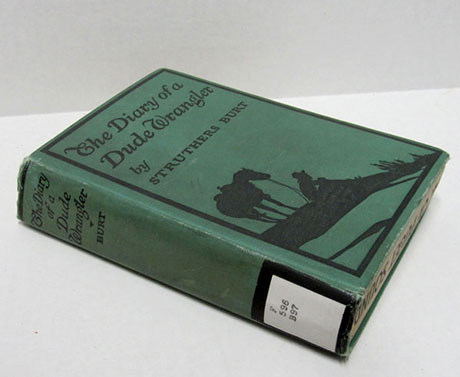 |
| A copy of Struthers Burt's influential memoirs which was first published in 1924. |
|
Along with
managing the facility, Struthers Burt, A Philadelphia native, was also
a recognized author. His books included Diary of a
Dude Wrangler, which gave a face to much of the dude ranch myth and
persona. Burt's wife, Katherine Newlin Burt was also an author who wrote western novels,
several of which were turned into silent films including Snowblind from 1921
|
| |
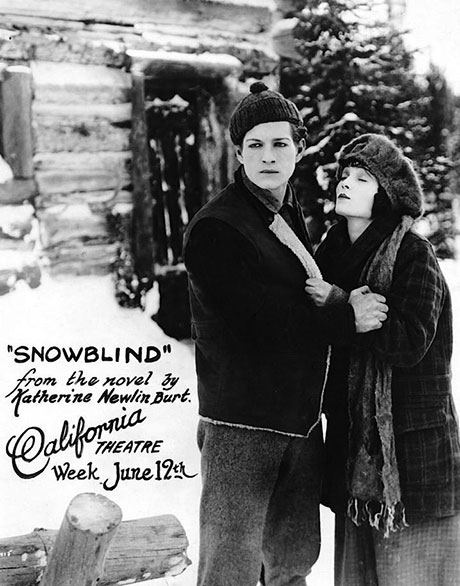 |
|
|
| 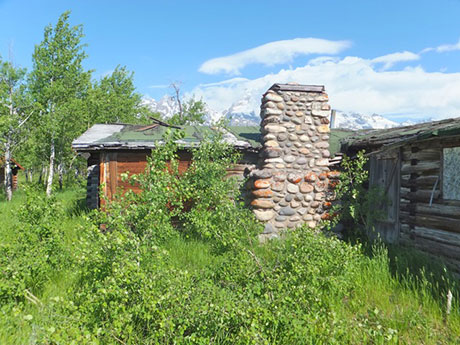 | | The
Corse Cabin, in its current condition, is leaning in many places and
struggles with heavy overgrowth as well as a very leaky roof. |
| While the ranch has remained unused since
its last resident died in
1988,
its significance to the area has remained profound. Grand Teton
National Park was originally developed as a "natural" park and the
original intent was to remove these few vestiges of human intervention
within the park's borders once the last owners had relinguished their
rights to the sites, allowing the land within the borders of the Park
to serve solely as a wild landscape. In the recent past, a new and more
progressive perspective has allowed the Park to recognize the
historical importance that a site like the Bar-B-C Dude Rance has
played in the history of the Snake River Valley as well as the park's
overall "cultural" significance to the area.
| | 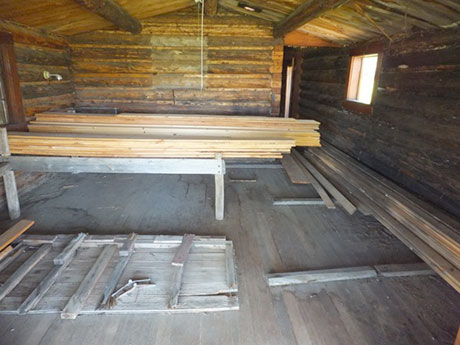 | | Although
some cabins are in severe condition, many of them still retain good
integrity. |
| Among the first
"dude" ranches in the region, the Bar-B-C was one of the most important
establishments of its kind in the Northwest and represents a type of
"entertainment" which was truely unique to American culture. Nowhere
else in the United States could a person find a higher
concentration of dude ranches than within the limits of
Grand Teton National Park. No fewer than five dude
ranches can still be seen within the park itself, many of which have
been, or currently are being restored to interpretively serve both the
park and its visitors.
| | 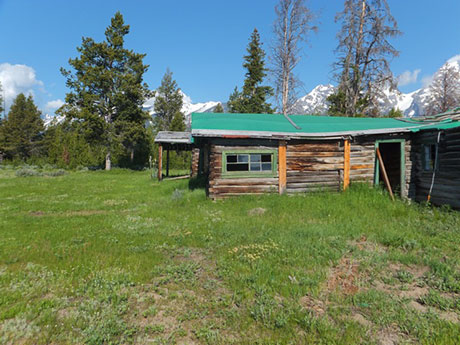 | | The
main lodge has suffered more than other buildings due to its size. This
view shows where a fireplace has been removed and the opening has been
logged in. |
| | While some of the dude ranches within the park have
been completely restored and serve as working and living facilities for
research teams within the park, functionality can be defined in a wide
variety of ways and the concept of "vacant but standing" is actively being applied to the Bar-B C. In many
ways functioning as a "ghost town" the visitor experience to the
Bar-B-C is a unique one within the park, offering an opportunity to
quietly commune with the site and its structures and sense the fleeting
nature of these once ubiquitous and influential types of cultural
"American recreation". | Promotional photograph from The California Theater to promote the
screening of Catherine Newlin Burt's "Snowblind," for the week of June 12th, 1921. |
|





